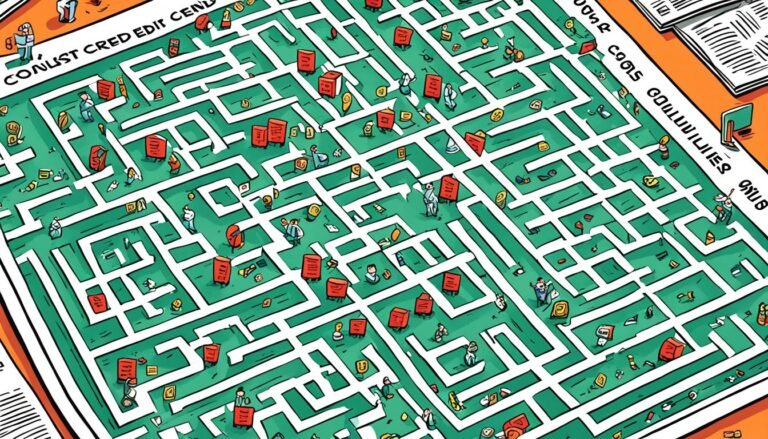AML and CFT Compliance: Essential Practices for Irish Financial Institutions
The Central Bank of Ireland updated its Anti-Money Laundering (AML) and Countering the Financing of Terrorism (CFT) Guidelines in 2021. It wants a stronger culture of compliance in financial institutions. This shows that rules for financial safety always change. So, it’s vital for financial firms to be very careful and keep up with new threats. Ireland plays a big role in the world’s financial system. That’s why banks and other money businesses here must follow AML and CFT rules well. They do this to stop money misuse.
The Criminal Justice (Money Laundering and Terrorist Financing) Act 2010 (CJA 2010) is a law in Ireland. It makes sure banks and money companies there are really good at following the rules. These businesses must prove they are doing things right to the Central Bank. The Bank checks them in many ways, like visiting in person. It can also use punishments to make them follow the rules. This all shows how important it is to have strong AML and CFT rules in place.
Key Takeaways
- The Central Bank of Ireland issued revised AML/CFT Guidelines in 2021 to enhance compliance.
- Financial institutions in Ireland must demonstrate compliance to prevent misuse of the financial system.
- The CJA 2010 mandates rigorous AML policies and CFT strategies for all credit and financial institutions.
- The Central Bank conducts on-site inspections to ensure compliance across the Ireland financial sector.
- Administrative sanctions emphasize the importance of adhering to compliance obligations.
Understanding AML and CFT Regulations in Ireland
In Ireland, there are strict rules to stop money laundering and terrorism financing. The main law for this is the Criminal Justice (Money Laundering and Terrorist Financing) Act 2010 or CJA 2010. It takes guidance from the EU to keep Ireland in line with the world’s standards.
Legislative Framework
The Act from 2010 covers money laundering and financing terrorism. It spells out what counts as money laundering and how to make sure who you’re dealing with is genuine. Key parts look at:
- Section 25: Puts certain people under money laundering and terrorism financing rules.
- Part 4: Describes the Central Bank of Ireland’s job to make sure everyone follows the rules.
There’s also other laws, like S.I. No. 110 and S.I. No. 16 of 2019, that dive into who really owns companies and trusts.
Key Regulatory Bodies
The Central Bank of Ireland leads in watching over how AML and CFT rules are followed. It keeps an eye on financial groups to ensure they meet the law’s demands. The Department of Foreign Affairs and Trade and the Department of Enterprise, Trade and Employment help too.
Importance of Compliance
Sticking to the AML and CFT rules is vital for Ireland’s finance image. It isn’t just about what’s right; it keeps the money system safe and strong. Following these laws stops financial crimes and helps Ireland meet world standards. The Central Bank often tells companies how to manage risks to avoid money laundering.
The latest guide for dealing with money laundering and terrorism financing was revamped on June 23, 2021. It covers things like checking who your customers are and keeping an eye on them. Meeting these rules helps banks and other financial groups keep our money world safe, stopping crimes.
Risk-Based Approach to AML and CFT
In Ireland, the Central Bank uses a detailed risk-based method for AML/CFT supervision. They carefully look at money laundering and terrorist financing risks in the financial world. This helps them target their efforts where they’re most needed.
Identification and Assessment of ML/TF Risk
The Central Bank does a thorough check on ML/TF risks. They sort them into four levels: High, Medium High, Medium Low, and Low. This process examines each firm’s operations, customers, and the goods or services they offer.
Firms that are seen as riskier get more supervision. This helps reduce money laundering risks and guards against terrorist financing.
- High ML/TF Risk: Inspections every 3 years
- Medium High Risk: Inspections every 5 years
- Medium Low and Low Risk: Strategic spot checks and quick measures
- Ultra High Risk: Most intense and frequent supervision
Risk Management Framework
A strong risk management framework is key for financial institutions. It is made to tackle challenges in AML/CFT supervision. The Central Bank focuses its supervision based on each entity’s level of risk. It can use its power under the Central Bank (Supervision and Enforcement) Act 2013 to do this, which includes issuing notes, asking for reports, and doing checks.
The Central Bank keeps updating its ways to check ML/TF risks. Firms need to combine being proactive with their risk controls to follow their AML/CFT rules well. Getting against the rules can lead to actions from the Central Bank’s Administrative Sanctions Procedure.
Essential Practices for Effective AML and CFT Compliance
In Irish financial institutions, good AML/CFT compliance needs strong leadership and clear rules. Directors and leaders need to know all about AML/CFT rules and make sure their plans work. They should set up rules based on possible risks to stop money laundering and other financing crimes.
Senior Management’s Role
Top leaders are key in making sure the company follows the rules. If they show they care about AML/CFT rules, everyone else will too. It’s their job to stay updated on new rules and reports, like the one from the European Commission on October 27, 2022.
Internal Controls and Procedures
Having good inside rules is vital in stopping money laundering and terrorist financing. Companies should check their rules often to keep up with new risks. The Central Bank of Ireland highlights how important it is to have strong rules to watch for and report suspicious activities.
The following table outlines key internal compliance controls:
| Control | Description |
|---|---|
| Transaction Monitoring | Systems to detect unusual or suspicious transactions. |
| Customer Due Diligence (CDD) | Processes to verify the identity of clients and assess their risk. |
| Adverse Media Screening | Checking for negative media coverage that may indicate risk. |
| Regular Audits | Ongoing reviews to ensure controls are effective and up-to-date. |
Employee Training and Awareness
Training employees is key to making sure everyone knows the rules. Training keeps everyone up to date on their jobs and the rules they need to follow. The Central Bank of Ireland says having a strong AML/CFT culture is very important in Irish retail banks.
Companies should make training that teaches about stopping money laundering and terrorist financing. They need to keep updating this training to match new guidelines from groups like the FATF and the EBA.
With leaders in charge, good internal rules, and well-trained employees, Irish financial institutions can make their AML/CFT work better. This helps reduce risks and hold everyone in the company accountable for following the rules.
Customer Due Diligence (CDD) and Know Your Customer (KYC) Procedures
CDD and KYC are key to fighting money laundering and terrorist funding. They help banks and other financial groups protect themselves. It’s all about knowing who you’re dealing with.
Institutions gather a lot of info to make sure their customers are who they say they are. This includes details like their names, where they live, and their birthdays. Robust KYC checks keep an eye on accounts and flags any risky behavior.
To really know their customers, institutions have to dig deep. They develop detailed customer profiles. This way, they can single out the risky clients for careful attention.
KYC means looking at three big things: CIP, CDD, and EDD. This trio digs into every part of a customer’s background. It helps catch any strange or worrisome actions early on.
Tech has been a game-changer. It’s made eKYC solutions possible. These tools make checking customers faster, more accurate, and smoother. As a result, customer onboarding is better, and rule-following is tighter.
Since 2016, Europe has tightened its anti-money laundering rules a lot. Money laundering cases have gone up. It shows why we really need to be thorough with KYC and AML measures.
In Ireland alone, money laundering is on the rise. The IMF says criminals manage to launder a lot of money every year. This makes it clear why strict KYC and AML rules are crucial.
| Directive | Implemented Year | Focus Area |
|---|---|---|
| 4th AML Directive | 2016 | Expanded CDD and KYC requirements |
| 5th AML Directive | 2018 | Enhanced transparency and UBO disclosure |
| 6th AML Directive | 2020 | Increased penalties and focused on cyber threats |
Regular checks are a must for all customers, based on how risky they are. This keeps the financial system clean. It also supports the fight against money laundering.
Monitoring and Reporting Suspicious Activities
Keeping an eye on suspicious activities is key for fighting money laundering. In Ireland, financial institutions use high-tech tools to catch strange transactions. These help spot any signs of money laundering or helping terrorists.
Transaction Monitoring Systems
Special monitoring systems watch transactions closely. They have smart technology that looks for risky moves. By following these systems, banks make sure they’re watching out for criminal actions and sticking to the law.
Reporting Obligations
When banks see something fishy, they have to speak up. They send off Reports (SARs) to the right people. This paperwork is important for stopping bad money plans.
And they have to do this reporting a lot so that the police have the clues they need.
Examples of Suspicious Activities
Illegal actions can come in many forms. This might mean strange transactions or acts that hide the real money path. Also, doing business with risky places or acting odd with accounts can be hints of crime.
Banks must always stay sharp and report anything that seems off. This helps stop crime and follows the rules.
Conducting Regular Audits and Updates to Compliance Programs
Keeping AML and CFT controls sharp means doing regular audits and updating programs. Financial institutions need to check their AML/CFT rules against new laws often. Making sure compliance programs change with new risks and regulations is key.
Frequency of Audits
Doing compliance audits often is very important for financial companies. The Financial Conduct Guide (FCG) says audits should happen once a year or right after big rule changes. This keeps the rules being followed and AML/CFT controls fresh.
Not every independent AML audit needs to cover everything every year. It’s better to look closely at risky or big areas. The skill of the auditors and the tools they use are very important in these checks.
| Audit Schedule | Focus Areas | Resources Required |
|---|---|---|
| Annual | Comprehensive review | Full auditing team, advanced technological tools |
| Bi-Annual | High-risk areas | Selective auditing team, targeted tools |
| Regulatory Changes | Policy and procedure revisions | Specialized auditors, updated regulatory guidelines |
Importance of Keeping Policies Up-to-Date
Updating AML programs by reviewing policies regularly is crucial. This keeps up with changing rules and helps avoid risks. Policy reviews should follow audits and new advice from overseers.
Reviewing policies often lets financial companies tackle crimes like money laundering and fraud before they happen. The FCG says companies should focus on risks they could actually face. So, updating AML programs is about being smart, not just following rules.
So, doing audits on time and updating AML programs well are crucial. It’s how companies show they’re serious about fighting financial crimes. This builds trust and shows their dedication to the fight.
Conclusion
Sustaining AML/CFT compliance in Ireland’s financial sector is crucial. It helps fight against money laundering and funding terrorists. Ireland has seen more e-money institutions and investment funds recently. This shows the financial sector’s growth and increasing complexity. Following AML/CFT standards greatly helps maintain financial integrity.
Irish financial entities must keep up with new threats, staying alert. Over the past years, the amount of money flow being watched has more than tripled. The Central Bank of Ireland is working hard to supervise the VASP sector better. This is key as new dangers, like virtual currencies, emerge.
It’s important to update the country’s risk assessment and follow FATF’s advice. These actions help Ireland lead in meeting global compliance standards. By making these practices a part of their everyday work, financial institutions protect themselves and help maintain a safe financial world.
Source Links
- Risk and Guidance | Central Bank of Ireland
- Key AML/CFT Risks & Hot Topics in 2022!
- Regulation for Anti-Money Laundering in Ireland
- Anti-Money Laundering and Countering the Financing of Terrorism Guidelines for the Financial Sector
- AML Guidance
- Supervision Anti Money Laundering and Countering the Financing of Terrorism
- The “Risk-Based” Principle of AML Management – ACAMS Today
- The International Anti-Money Laundering and Combating the Financing of Terrorism Regulation: A Critical Analysis of Compliance
- Anti-Money Laundering (AML) in Ireland
- Financial Crime Compliance: Know Your Customer (KYC) Support Built for a Rapidly Changing Landscape
- What Are the Key Differences Between AML, CDD and KYC?
- Customer Due Diligence (CDD): What Banks and Financial Institutions Need to Know
- Report on Anti-Money Laundering/Countering the Financing of Terrorism and Financial Sanctions Compliance in the Irish Funds Sector – November 2015
- Report on Anti-Money Laundering/Countering the Financing of Terrorism and Financial Sanctions Compliance in the Irish Bank Sector – February 2015
- The importance of carrying out regular independent AML audits
- The Importance of Regular Independent AML Audits – ACAMS Today








